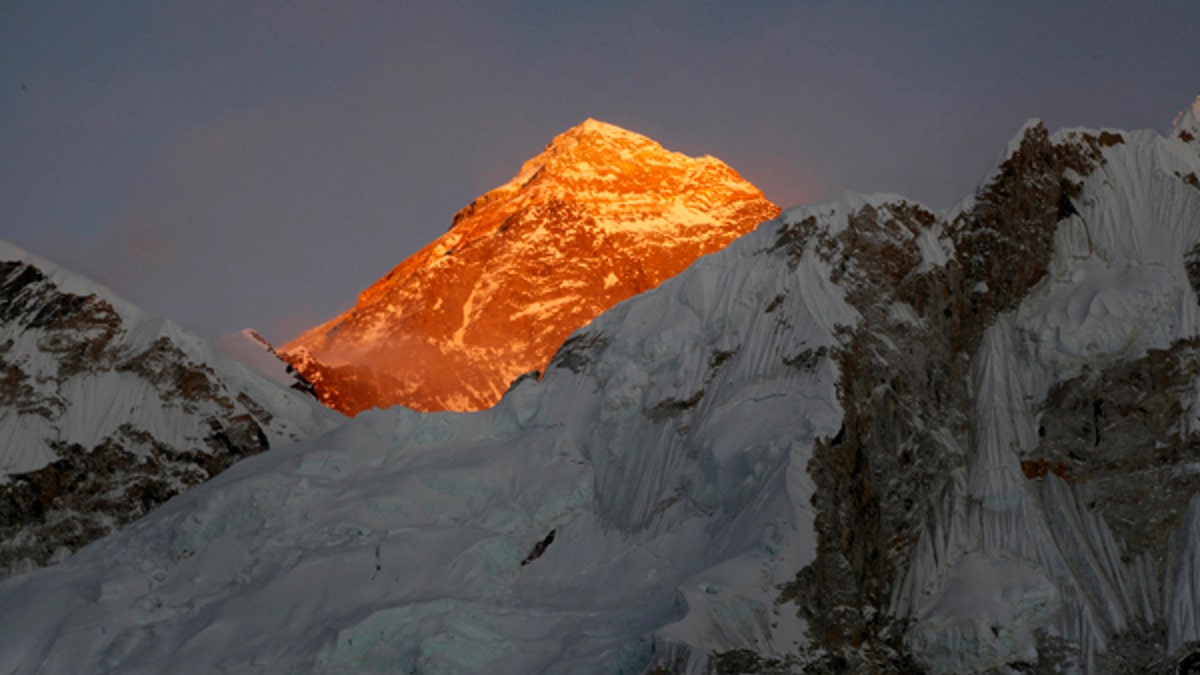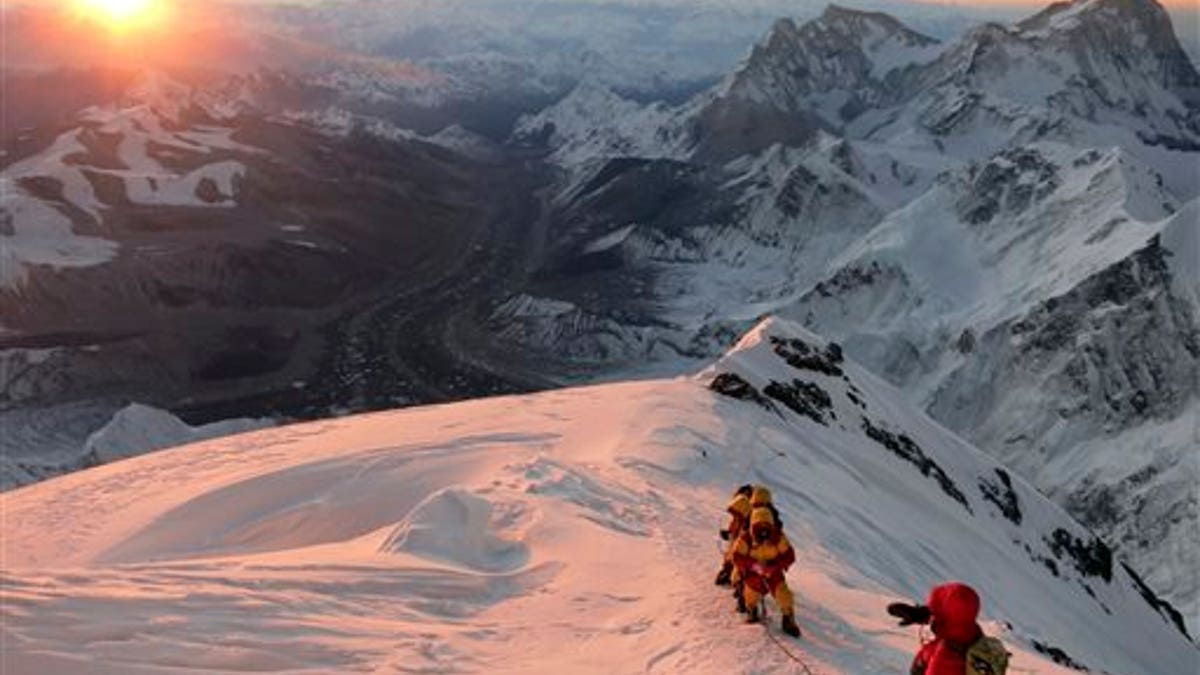
Fotografía de archivo del 12 de noviembre de 2015 del Monte Everest visto desde Kalapatthar, Nepal. (AP Foto/Tashi Sherpa, Archivo)
It’s a scene that would have been unheard of just a few decades ago.
The Hillary Step – a 40-foot wall of snow and rock just below Mount Everest’s 29,029-foot summit and well into the so-called “death zone” above 26,000 feet – looks more like an escalator at a crowded shopping mall than one of the most precarious places on Earth for a human to be. Dozens of climbers in colorful down suits shuffle along lines of fixed rope at a dangerously slow pace in their push to summit the world’s highest mountain.
When Sir Edmund Hillary, whose name is attached to the infamous step, and Tenzing Norgay in 1953 became the first people to summit Everest, they were utterly alone on the mountain’s upper slopes. More than 60 years later, hundreds of people attempt, every March through October, to reach the top of the world during the peak climbing season.
While major improvements in climbing gear, weather forecasting and communications equipment -- along with the advent of professional guiding services -- have made the endeavor slightly safer, it also has opened up the mountain to less-experienced climbers and created the high-altitude traffic jams on the mountain that in the past have proved deadly.
“The biggest problem on Everest is the toxic mix of inexperienced climbers and unqualified guides,” Alan Arnette, a climber who summited Everest in 2011, told Fox News. “That is the new reality on the mountain.”
Overcrowding is a recent phenomenon on Everest as the mountain -- which straddles the border of Nepal and the Chinese autonomous region of Tibet -- was closed to foreigners for centuries and for most of the last century Nepalese authorities would only grant a climbing permit to one group per season. During the 1980s, Nepal – seeking to improve the country’s financial situation – began issuing multiple permits during the climbing season and the ensuing number of people attempting Everest skyrocketed.
In 1990, 72 people made it to the summit of Everest, while in 2016, 641 reached the peak.
The Nepalese Tourism Department issued a record 371 permits this year to people to scale the mountain. The increased number of climbers is likely because many people were unable to climb in 2014 when a deadly icefall killed 16 Sherpas, and an earthquake-triggered avalanche the following year took another 18 lives.
Climbers who had permits for the 2014 season were allowed to receive a free replacement permit good until 2019, while climbers with 2015 permits were given only until this year.
Veteran climbers and many guide services say that the large number of people on the mountain is not the main problem, but exacerbates the other dangers on Everest. Large groups and unproven climbers slow the progress of everyone else – keeping people on the mountain longer and exposing them to risks like avalanches, collapsing columns of ice known as serac falls, crevasses and rapidly changing weather conditions.
“Overcrowding is certainly an issue,” Gordon Janow, director of programs at the Seattle-based guide service Alpine Ascents, told Fox News. “It’s become one of the variables that you have to deal with and try to mitigate the risks the same way you do with avalanches and crevasses.”
Deaths on Everest have become a tragically normal event during the climbing season. So far this year, 10 people have died in a series of accidents, four more than mountaineering officials expect in a typical year.
[Overcrowding has] become one of the variables that you have to deal with and try to mitigate the risks the same way you do with avalanches and crevasses.
On Wednesday, authorities said Sherpa rescuers found the bodies of four climbers inside a tent at the highest camp on Everest, a few thousand feet from the summit. The rescuers were in the area to recover the body of a Slovak mountaineer who had died over the weekend.
"Some years there are more, and some years there are less, but deaths on the mountain are normal," Jiban Ghimire, who runs a prominent expedition company, Shangrila-Nepal Trek, told The Associated Press. "It is the nature of the work. We can't say what will happen on the mountain.”
Despite the number of deaths and concern in the climbing community, experts say that there is very little chance that anybody will address the issue of overcrowding. Nepal is heavily reliant on the money it gets from the climbing permits – which cost around $11,000 per climber – and many poorly trained Sherpas have started their own cut-rate guide services to cater to a growing market of middle-class climbers from China and India.

In this May 18, 2013 file photo released by mountain guide Adrian Ballinger of Alpenglow Expeditions, climbers make their way to the summit of Mount Everest, in the Khumbu region of the Nepal Himalayas. (AP Photo/Alpenglow Expeditions, Adrian Ballinger, File)
“Demand to climb Everest has gone through the roof,” Arnette said. “So now you have Sherpas in Nepal who two weeks before were herding yaks and now they’re guiding clients up the mountain.”
Arnette said that it’s up to the climbers to know their limits, have the proper skills for high-altitude mountaineering and pick a guide service with experience on Everest or similar peaks. But with less than a week to go in the official Everest climbing season and an estimated 150 people still expected to make a push for the summit, he had some advice from his previous experience on the mountain.
“In 2011, I summited at five in the morning and I was the fourth person to make it up,” he said. “The best way to avoid overcrowding is to start early. The crowding can be managed if you move fast and efficiently.”
